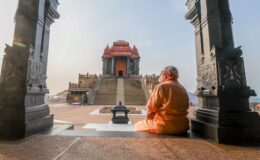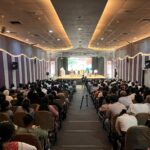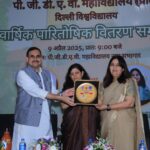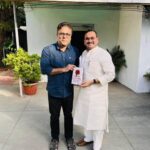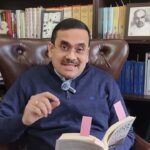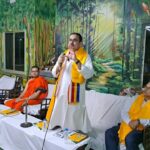What’s Wrong With Modi Speaking On Sanskrit In Berlin?
- By : Anirban Ganguly
- Category : Articles
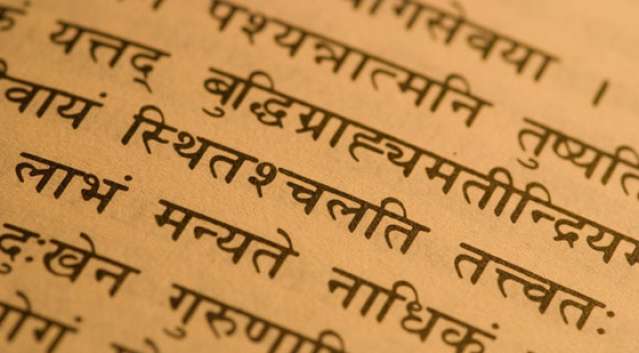
Those who question Prime Minister’s motive in talking about Sanskrit in a nation which discovered the glory of this language 200 years ago are promoters of political charlatanism.
In his 1922 treatise, “Our Educational Problem”, Ghadar revolutionary and thinker Lala Hardayal dedicated a whole chapter to discussing the issue of “Sanskrit versus English” and made some very forceful points in favour of strengthening and teaching of the mother of languages in India. Sanskrit, Hardayal argued “is the only national tongue for all India, the language of our noble religion and the tongue associated with India’s highest hopes and happiness.” The revolutionary thinker in him saw Sanskrit as “the medium of inter-communication among the various States”, and as the “language of science and scholarship”, which, while speaking “to us of our common past”’, was also the language that could “furnish the only solid foundation for a genuine national movement”.
Hardayal, whom Communists in India have long tried to appropriate, was scathing against those who spoke of Sanskrit as being “dead” – “Sanskrit is not dead”, he castigated. “it is we who are dead.” His call to disassociate from a section – especially the anglicised and denationalised – which was presenting itself as a roadblock to the strengthening of Sanskrit in India was indeed prescient then as it continues to be relevant now: “Those who wish to teach the people and build up a nation, must part company with those who traffic in unreal political charlatanism. Those who desire to make a great and united Nation must take their stand on Sanskrit as the eternal refuge and glory of the Indian people.”
I will not, in this column, talk in detail about both Sri Aurobindo and Dr. B.R.Ambedkar supporting the teaching and popularisation of Sanskrit – both have been beyond the pale of Marxist appropriation and therefore have been wholly rejected by dialecticians of Communism in India. However, a few points may be made here to strengthen Hardayal’s own position on Sanskrit. In his preface to a “National Education in India”, as far back as example, pointed at the fundamental issue when he wrote:
“…the vital question is how we are to learn and make use of Sanskrit and the indigenous languages so as to get to the heart and intimate sense of our own culture and establish a vivid continuity between the still living power of our past and the yet uncreated power of our future.”
Displaying a deep civilisational connect with the essence of the Bharatiya ethos, Dr. Ambedkar, in the Constituent Assembly in September 1949, favoured the use of Sanskrit as the national language. He received support from representatives from all corners of the country. Muslim member from Bengal, Naziruddin Ahmed, for example, made spirited interventions in the debate, and while considering Sanskrit “as one of the greatest of languages”, regretted that Indians did not know with “what [reverence] Sanskrit is held in the outside world.” Arguing for the consideration of Sanskrit as the national language, Ahmed argued that “If we have to adopt a language, it must be grand, great and the best. Then why should we discard the claim of Sanskrit?” In any case, these are matters of detail, but the fact is that each time there is a discussion on Sanskrit, a noisy and preachy section blankets or ignores these dimensions.
It would be interesting, however, to see how the professedly-secular cabal would react to the comments of Hardayal, an icon whom they have long marginalised and silenced, by turning him into a by-product of their Marxian-Dialectical worldview. After all, it was this cabal which raised the red flag the moment Prime Minister Modi made frank observations in Berlin on the hurdles and challenges to the teaching of Sanskrit in India.
Prime Minister Modi spoke to a predominantly Indian audience about the prevailing prejudice in India against the teaching and popularising of Sanskrit – in short, he reflected aloud that Sanskrit – as a language, culture and worldview – was much beyond and above the sham secularist positions and arguments that are habitually dished out against its teaching in India. By making such a comment, Prime Minister not only did not shy away from addressing an issue that is deeply and civilisationally linked to the India-Germany relationship, but also reiterated his commitment to continuing that momentum of strengthening Sanskrit nationally that his government has launched.
It is difficult to see therefore why such a frank remark, made to an audience whose members – despite their physical distance – have always displayed a stronger commitment and bond to India’s welfare than many homegrown pseudo-Marxists and Leftists who have lived and fattened themselves off the doles dished out by a particularly sympathetic political dispensation, has piqued or rubbed those who probably have no capacity to appreciate or pronounce Sanskrit words and expressions.
We have also been reminded in a column by Siddharth Varadarajan, eminent member of the “secular” cabal, that it was “secular” Nehru who appointed the Sanskrit Commission in 1956- 1957. The question that begs an answer is whether Nehru listened to or honestly tried to implement the recommendations of that Commission headed by the legendary linguist and scholar Suniti Kumar Chatterjee. Of course, Varadarajan admits, albeit reluctantly and perfunctorily, that nothing much was done till 1974 when Mrs. Gandhi (senior) launched a Sanskrit bulletin on the All India Radio – as if that alone would pave the way for a countrywide rejuvenation of Sanskrit.
One is struck by the earnest and emotional tone of Prof. Suniti Kumar Chatterji’s letter addressed to the then education minister, Maulana Azad, during the submission of the report. Trying to explain as to how such a deep appeal or such a rich and detailed report failed to move the then leaders running the Government of India is of course beyond the scope of this piece. Explaining it is perhaps best left to those who make a regular living by talking of a fascist state, secularism in danger, or rise of a corporate-communal alliance. Suniti Kumar’s observances require some reiteration. Expressing great satisfaction that the report was “unanimous”, Suniti Kumar wrote to the Maulana:
The work entrusted to us by the Government was of high educational, cultural as well as national importance, and the approach to the problems by the members was as all- sided and comprehensive as one could wish it to be. Their line of approach in the first instance was that of objective fact-finding, not divorced from high ideals of service to the people through the preservation of the basic elements of their national culture.
The eminent members of the Commission, in the course of one short year, travelled the length and breadth of the country, undertook detailed visits to institutions involved in the teaching of Sanskrit and came up with recommendations which remain striking even today, a good five decades after they were formulated. “As an Educationist, who has been connected with Linguistic and Humanistic Studies and Research for over 40 years”, wrote Suniti Kumar,
I can only put in a plea before our National Government for the support of Sanskrit which forms one of the bases of the cultural and political unity of India. In my opinion, as a Professor of Linguistics who has not cut himself off from public contacts and public affairs, the rehabilitation of Sanskrit in Indian education and Indian Public life, apart from the general cultural life of the people, will be a potent factor which the Government may well employ to fight the growing fissiparousness of Linguism and to strengthen the bonds of unity among the Indian people. The implementing of the aims and objects, which the Government had in view with regard to Sanskrit and its place in Indian education and Indian life when this Commission was appointed, will unquestionably win the grateful approbation of the people.
“About the enthusiasm of the people of India as a whole for Sanskrit”, unequivocally concluded Suniti Kumar, “We have received, in the course of our tour and our work, the most convincing evidence.” Nehru’s government and successive governments after that ignored or did little to implement the recommendations or frameworks of such a dynamic report, thus dousing the people’s “enthusiasm” for Sanskrit. Such an inaction was also mainly because of the proliferation of Leftism in the Indian academia starting from the 1960s – a proliferation that taught us to negate our indigenous roots and achievements and evolved a certain hatred and disdain for the civilisational high-water marks of Hindu India. Suniti Kumar himself was forgotten and relegated to the margins by the intellectual children of Chomsky, his contribution and linguistic methodology questioned and dumped as flawed, his legacy put out of reach of successive generations.
It was only under the previous NDA regime and now the under the present Modi Government that Sanskrit received and is receiving a continued emphasis and genuine efforts are being made to rehabilitate it in Indian education and in Indian public life.
On a visit to Germany last month, I discerned a genuine appreciation amongst the intelligentsia of the pro-active efforts being made by the present Indian Government on the issue of Sanskrit, and many confessed that they should have undertaken similar initiatives to strengthen their own language and culture. The Germans, at least the ones I interacted with, did not seem disturbed with how we decided to promote the language of our civilisational soul; after all, they too had discovered its richness a good two centuries ago. The shallow noise generated each time steps are taken to examine seriously the role and place of Sanskrit in our educational schemes is thus, as disconcerting as it is unnecessary.
Not only has this government given emphasis on better appreciating the civilisational role of Sanskrit, it has in fact gone a step further and constituted, for the first time since independence, an “Expert Committee on Language for Comprehensive Language Policy for India.” Why is this development not sufficiently known or adequately discussed? Why is it not appreciated that some very learned experts, possessing a lifetime of work in the area of linguistics and traditional texts, are part of this committee constituted by the present Human Resource Development Ministry?
Is it known, for example, that some of the best discussions on languages in India and in the Indian tradition are taking place within this committee which is quietly working and studying the complex and varied dimensions of language in the Indian civilisational context?
Constitution of such groups, initiating of such efforts, referring to the need of studying Sanskrit and repositioning it in our civilisational discourse are the manifestations of a deep commitment Prime Minister Modi and his government have to Indic civilization. Pulling him up for discussing it in a land that has itself seen some of the best and earliest researches on Indian languages is obfuscating the real issue – the issue of the marginalisation of our traditions and of our means of self-expression in our own country by an articulate and “denationalised” cabal.
On his 125th birth anniversary this year, the emphasis on Sanskrit, with the Prime Minister himself reiterating its pre-eminence in various forums, would have made Suniti Kumar Chatterji happy; it is a symbolic tribute to his great and relentless advocacy of Sanskrit and for the strengthening Indian languages. Those who question Prime Minister’s motive or wisdom in promoting these are themselves the promoters of political charlatanism – in a new India which is being envisaged, such a class stands rejected.


